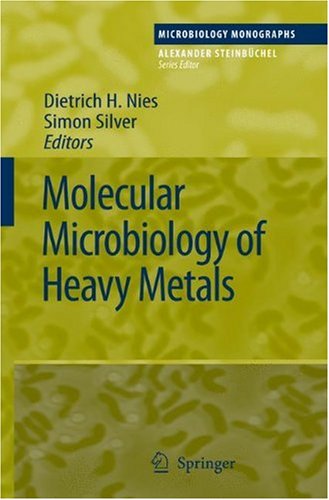

Most ebook files are in PDF format, so you can easily read them using various software such as Foxit Reader or directly on the Google Chrome browser.
Some ebook files are released by publishers in other formats such as .awz, .mobi, .epub, .fb2, etc. You may need to install specific software to read these formats on mobile/PC, such as Calibre.
Please read the tutorial at this link: https://ebookbell.com/faq
We offer FREE conversion to the popular formats you request; however, this may take some time. Therefore, right after payment, please email us, and we will try to provide the service as quickly as possible.
For some exceptional file formats or broken links (if any), please refrain from opening any disputes. Instead, email us first, and we will try to assist within a maximum of 6 hours.
EbookBell Team

5.0
100 reviews
ISBN 10: 3540697705
ISBN 13: 9783540697701
Author: Dietrich H Nies, Simon Silver
This book covers allocation of metals in cells, metal transporter, storage and metalloregulatory proteins, cellular responses to metal ion stress, transcription of genes involved in metal ion homeostasis, uptake of essential metals, metal efflux and other detoxification mechanisms. The book also discusses metal bioreporters for the nanomolar range of concentration and tools to address the metallome. In addition, coverage details specific metals.
Understanding How Cells Allocate Metals
Metalloregulators: Arbiters of Metal Sufficiency
Transcriptomic Responses of Bacterial Cells to Sublethal Metal Ion Stress
Bacterial Transition Metal Homeostasis
Biosensing of Heavy Metals
A Glossary of Microanalytical Tools to Assess the Metallome
Acquisition of Iron by Bacteria
New Transport Deals for Old Iron
Manganese: Uptake, Biological Function, and Role in Virulence
How Bacteria Handle Copper
Microbial Physiology of Nickel and Cobalt
Zinc, Cadmium, and Lead Resistance and Homeostasis
Microbiology of the Toxic Noble Metal Silver
Mercury Microbiology: Resistance Systems, Environmental Aspects, Methylation, and Human Health
Arsenic Metabolism in Prokaryotic and Eukaryotic Microbes
Reduction and Efflux of Chromate by Bacteria
Molybdate and Tungstate: Uptake, Homeostasis, Cofactors, and Enzymes
heavy metal microbiology
molecular metals
molecular weights of metals
which of the following is not a heavy metal microbiology
heavy metals generally kill microorganisms by
heavy metals typically kills microbes by
Tags: Dietrich H Nies, Simon Silver, Molecular, Microbiology